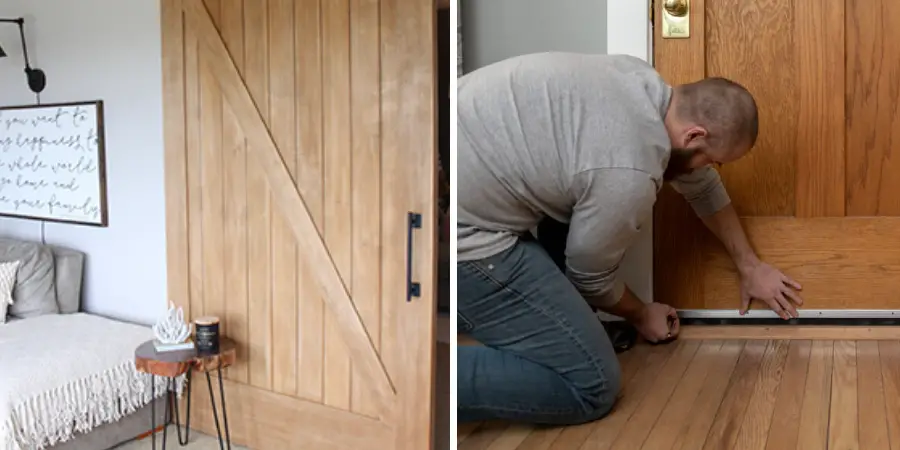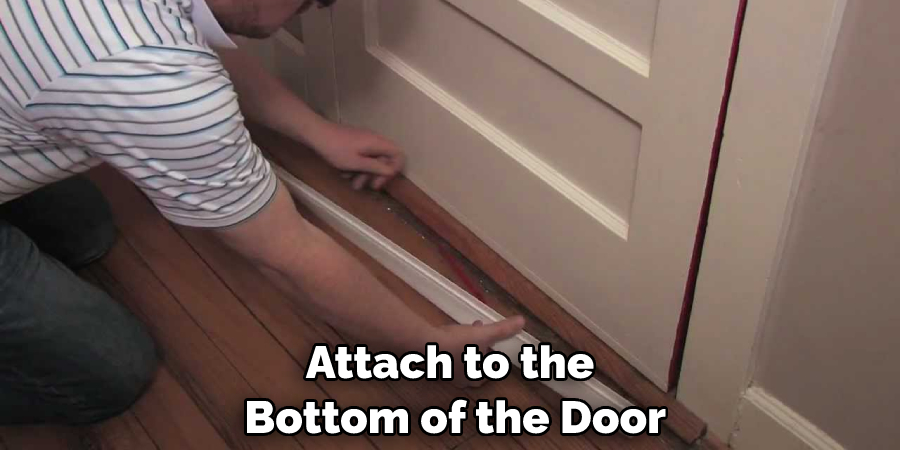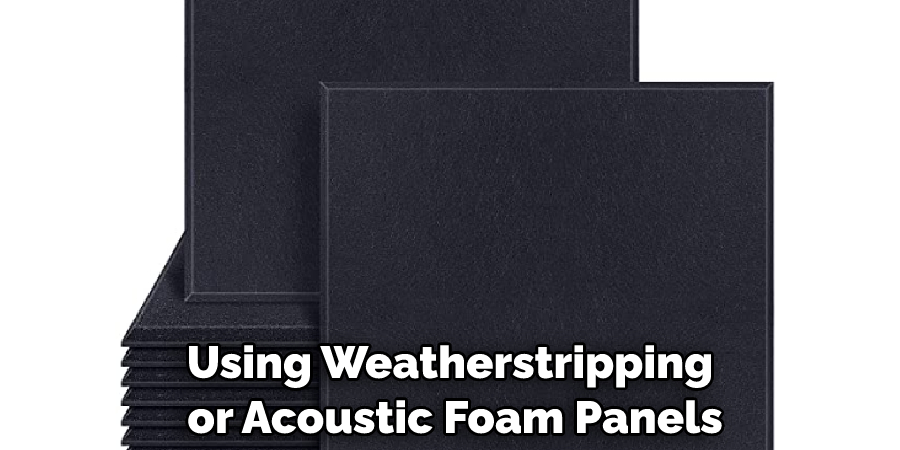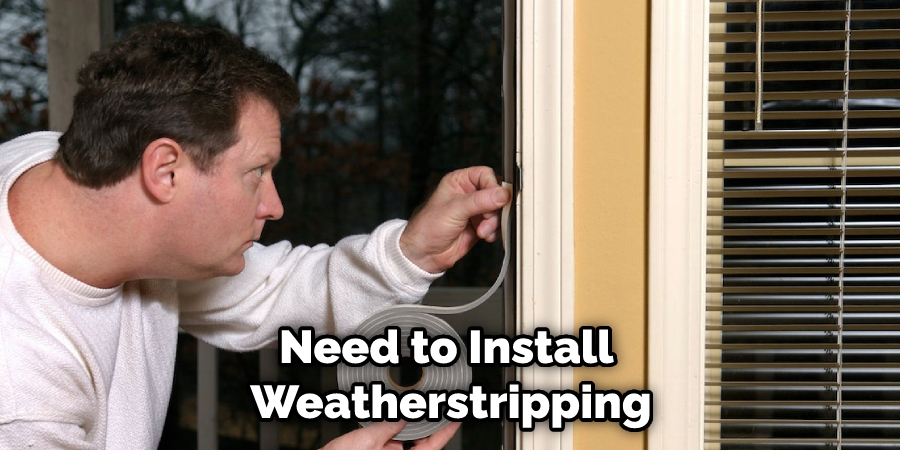Soundproofing is important in creating a peaceful, quiet environment in your home or workspace. Making a hollow core door soundproof can help reduce noise pollution and provide you with a more restful atmosphere. When soundproofing a hollow core door, you will need to consider the materials used in its construction and determine what type of insulation would be best for your needs. Additionally, you will need to ensure that the door is sealed properly and that all gaps are sealed accordingly.

One of the main advantages of making a hollow core door soundproof is that it can help reduce noise pollution in your home. Not only will this help to create a more peaceful environment for those living in or around your home, but it can also help you achieve better sleep quality and improved mental health. Additionally, soundproofing a hollow core door can make it more difficult for sound from outside to enter your home, potentially giving you some extra privacy. It can also help protect your home from unwanted noise sources such as traffic or loud neighbors. You can find step-by-step instructions on how to make a hollow core door soundproof in this blog article.
Materials Youn Will Need
- Door seal kit
- Acoustical caulk
- Drywall screws
- Thin plywood
- Acoustic insulation
- Weatherstripping
- Vinyl sheeting with adhesive backing
- Foam matting or felt strips
- Soundproof curtains or blankets
- Foam door gaskets.
Step by Step Processes for How to Make a Hollow Core Door Soundproof
Step 1: Inspect the Hollow Core Door
Before you start soundproofing your hollow core door, inspect the gaps and spaces around it. Check to ensure there are no cracks or holes that allow noise to pass through. If you find any, fill them in with caulk before moving on.
Step 2: Install Door Sweeps
Door sweeps are strips of metal or rubber that attach to the bottom of the door. They help create a tight seal and reduce sound transmission by blocking off any gaps between the floor and the door. Weatherstripping is another way to reduce noise transmission through your hollow core door. Apply the weatherstripping around all four edges of the door frame. Make sure it is sealed tightly so that no noise can pass through.
Step 3: Hang Heavy Curtains
Hang heavy curtains over your hollow core door to provide an extra layer of soundproofing. This will help reduce the amount of sound entering your home from outside sources. Acoustic foam panels are a great way to reduce sound transmission through your hollow core door. Attach the acoustic foam panels to the inner side of your door using nails, screws, or adhesive.

Step 4: Place a Rug in Front of the Door
Placing a rug in front of your hollow core door can help absorb sound waves before they enter your home. Try to find a thick, dense rug that will provide the most effective soundproofing. Soundproof blankets are another option for soundproofing hollow core doors. Hang them on your door’s inner side and ensure they cover it completely for maximum effectiveness.
Step 5: Create a Sealed Air Space
To create an even better barrier against sound transmission, consider creating a sealed air space between the door and the frame. This can be done by using weatherstripping or acoustic foam panels. Adding mass to your hollow core door is another great way to reduce sound transmission. You can do this by attaching mass-loaded vinyl sheeting or other heavy materials to the inner side of the door.
Step 6: Invest in a Door Soundproofing Kit
If you are looking for an easy and affordable way to make your hollow core door soundproof, consider investing in a door soundproofing kit. These kits have everything you need to properly soundproof a door and make it more effective at blocking noise.
Following these steps will help you make your hollow core door soundproof and block out unwanted noise from entering your home.

Tips for How to Make a Hollow Core Door Soundproof
- Always wear protective gear when working on the door. This includes eye protection, work gloves, and a dust mask to protect against airborne particles.
- Check your local building codes to determine what type of soundproofing material is allowed in your area, and follow all safety guidelines accordingly.
- Review the instructions provided with the soundproofing material you purchase to ensure proper installation.
- Measure the door and any existing moldings carefully so that your soundproofing material fits properly.
- When attaching the soundproofing material, use screws or nails instead of glue to ensure a secure fit on the hollow core door.
- Use a caulking gun to seal any gaps or cracks between the door and the soundproofing material.
- Test the results of your work after installation by closing the door and checking for any remaining noise coming through.
- In order to make sure the soundproofing is lasting, periodically check to ensure the soundproofing material is still securely fastened and that no new gaps or cracks have developed.

By following these tips, you can effectively soundproof a hollow core door and ensure a safe and successful project.
How Many Layers of Material Should Be Used?
When soundproofing a hollow core door, it is important to use multiple layers of material to reduce sound transmission through the door effectively. Generally speaking, the more layers of materials you add, the more soundproof your door will be. Ideally, you should use at least three different layers of materials when soundproofing a hollow core door.
The first layer should be a thick insulation material, such as mass-loaded vinyl or foam. This will act as the primary sound barrier and help to reduce noise transmission through the door. The second layer should be a layer of rubberized asphalt, which will further dampen the vibrations from outside noise. Finally, you can use a thin layer of acoustic fleece to absorb any remaining sound waves and keep the door as quiet as possible.
How Can Weatherstripping Be Used on a Hollow Core Door?
Weatherstripping is an effective way to soundproof a hollow core door. It creates a tight seal between the door and frame, blocking out noise from outside your home. To use weatherstripping on your hollow core door, start by cleaning the area where you’ll be installing it. Then, measure and cut the weatherstripping so that it’s slightly longer than the perimeter of your door.
Apply a generous bead of adhesive along the backside of the weatherstripping and press it into place around the door frame. If you’re using felt-tape weatherstripping, use nails or staples to secure it in place.
For other types of weatherstripping, press firmly until it’s fully adhered. Once the weatherstripping is installed, check for any gaps or air leaks and fill them with additional adhesive. Additionally, you can use a door sweep to seal the gap between the bottom of your door and the floor for added soundproofing. With these steps, you can make your hollow core door soundproof in no time.
How Much Will It Cost to Make a Hollow Core Door Soundproof?
Making a hollow core door soundproof can be expensive, depending on the level of soundproofing desired. The cost will depend on the type and quality of materials used as well as the complexity of installation. The most basic option for soundproofing a hollow core door is to install an acoustic sealant around the edges, which can cost anywhere from $20 to $50 or more.
The cost can rise quickly if you need more soundproofing, such as a door sweep or additional acoustic insulation. A full-blown system of soundproofing a hollow core door with heavy-duty insulation and other materials may cost hundreds of dollars. Consider the level of soundproofing desired before deciding what type of materials and installation will be needed to make a realistic budget for the project.
How Much Time and Effort is Required to Make a Hollow Core Door Soundproof?
Making a hollow core door soundproof is not difficult, but it requires time and effort. To begin with, you will need to install weatherstripping around the edges of the door. Doing this properly can take up to an hour, as you must ensure that all areas are sealed off from potential air leaks. Additionally, you will need to add mass to the door by installing a soundproofing material such as acoustic foam. This can be done in a few hours and is well worth it as it helps ensure that any noise passing through is significantly reduced or eliminated completely.

Finally, if desired, you could install additional soundproofing materials like rubber mats or cardboard to reduce sound transmission further. All in all, this process could take up to one day, depending on how much effort you choose to put in. No matter how much time and effort it takes, making a hollow core door soundproof is worth the investment, as it will provide improved privacy and peace of mind for years to come.
Conclusion
In conclusion, making a hollow core door soundproof is an achievable task. With the right supplies and knowledge, you can make a significant difference in the amount of noise that comes through the door. The three main options for soundproofing a hollow core door are using acoustic panels, filling the space with insulation, or using sealants and weatherstripping. Each method has its own merits and drawbacks, but all of them can be used to improve soundproofing.
For the best results, try combining different methods for a robust solution. With a little bit of effort and patience, you can make your hollow core door soundproof in no time. I hope this article has been beneficial for learning how to make a hollow core door soundproof. Make Sure the precautionary measures are followed chronologically.
You Can Check It Out to Cut Groove in Bottom of Barn Door

